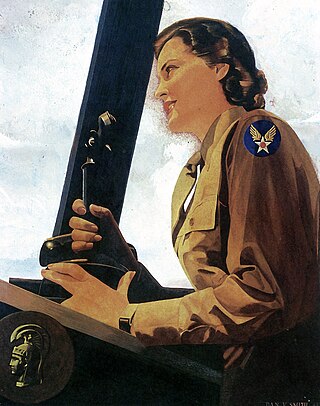
The Women's Army Corps (WAC) was the women's branch of the United States Army. It was created as an auxiliary unit, the Women's Army Auxiliary Corps (WAAC) on 15 May 1942 and converted to an active duty status in the Army of the United States as the WAC on 1 July 1943. Its first director was Colonel Oveta Culp Hobby. The WAC was disbanded in 1978, and all units were integrated with male units.
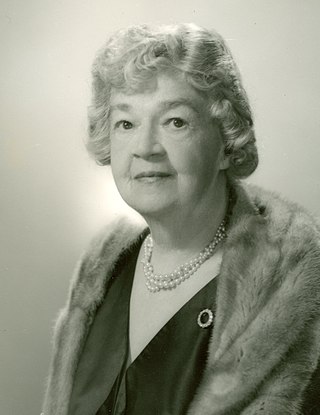
Edith Rogers was an American social welfare volunteer and politician who served in the United States Congress. She was the first woman elected to Congress from Massachusetts. Until 2012, she was the longest serving Congresswoman and was the longest serving female Representative until 2018. In her 35 years in the House of Representatives she was a powerful voice for veterans and sponsored seminal legislation, including the Servicemen's Readjustment Act of 1944, which provided educational and financial benefits for veterans returning home from World War II, the 1942 bill that created the Women's Army Auxiliary Corps (WAAC), and the 1943 bill that created the Women's Army Corps (WAC). She was also instrumental in bringing federal appropriations to her constituency, Massachusetts's 5th congressional district. Her love and devotion to veterans and their complex needs upon returning to civilian life is represented by the Edith Nourse Rogers Memorial Veterans Hospital in Bedford Massachusetts that is named in her honor.

Fort Huachuca is a United States Army installation, established on 3 March 1877 as Camp Huachuca. The garrison is now under the command of the United States Army Installation Management Command. It is in Cochise County in southeast Arizona, approximately 15 miles (24 km) north of the border with Mexico and at the northern end of the Huachuca Mountains, adjacent to the town of Sierra Vista. From 1913 to 1933, the fort was the base for the "Buffalo Soldiers" of the 10th Cavalry Regiment. During the build-up of World War II, the fort had quarters for more than 25,000 male soldiers and hundreds of WACs. In the 2010 census, Fort Huachuca had a population of about 6,500 active duty soldiers, 7,400 military family members, and 5,000 civilian employees. Fort Huachuca has over 18,000 people on post during weekday work hours.

The United States Army's Officer Candidate School (OCS) is an officer candidate school located at Fort Benning, Georgia, that trains, assesses, and evaluates potential commissioned officers of the U.S. Army, U.S. Army Reserve, and Army National Guard. Officer candidates are former enlisted members, warrant officers, inter-service transfers, or civilian college graduates who enlist for the "OCS Option" after they complete Basic Combat Training (BCT). The latter are often referred to as college ops.
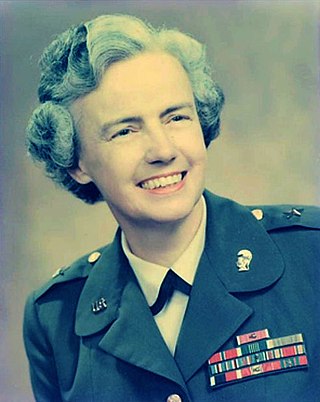
Elizabeth Paschel Hoisington was a United States Army officer who was one of the first two women to attain the rank of brigadier general.
The United States Army in World War II used a variety of standard and non-standard dress and battle uniforms, which often changed depending upon the theater of war, climatic environment, and supply exigencies.

Fort McClellan, originally Camp McClellan, is a decommissioned United States Army post located adjacent to the city of Anniston, Alabama. During World War II, it was one of the largest U.S. Army installations, training an estimated half-million troops. After the war it became the home of the Military Police Corps, the Chemical Corps and the Women's Army Corps. From 1975 and until it was closed in 1999, Fort McClellan was home of the Military Police Corps and the One Station Unit Training (OSUT) Military Police School. Also after World War II and until it was closed in 1999, it was home of the Chemical Corps School, which trained soldiers in chemical warfare. In 1988, Fort McClellan was used as an alternate training academy for the United States Border Patrol. Before its closure by the Base Realignment and Closure commission (BRAC), the post employed about 10,000 military personnel and about 1,500 civilians. It underwent unexploded ordnance (UXO) clean up from 2003 to 2014. Since 2010, about 3,000 acres of the post's brownfield land have been redeveloped as a mixed-use community.
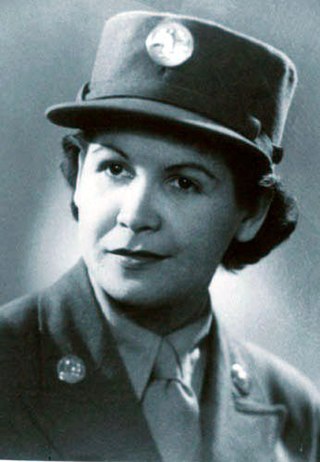
Tech4 Carmen Contreras-Bozak, was the first Puerto Rican woman to serve in the U.S. Women's Army Corps (WAC) where she served as an interpreter and in numerous administrative positions.

Charity Adams Earley was an American United States Army officer. She was the first African-American woman to be an officer in the Women's Army Auxiliary Corps and was the commanding officer of the first battalion of African-American women to serve overseas during World War II. Adams was the highest-ranking African-American woman in the army by the completion of the war. The 6888th Central Postal Directory Battalion's motto was "No Mail, Low Morale." A monument honoring this unique group of women was dedicated at Fort Leavenworth, Kansas on November 30, 2018.

Mildred Inez Bailey was a United States Army officer, who served as the eighth director of the Women's Army Corps from August 1971 until July 1975. She was the third woman in United States Army to reach the rank of brigadier general.
Anna Mac Clarke was a Women's Army Corps officer during World War II. She became the first African American woman to be a commanding officer of an otherwise all-white regiment. She became a first lieutenant.
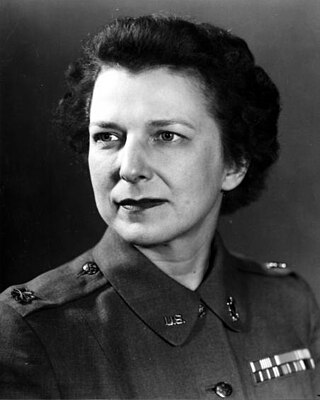
Irene O. Galloway (1908–1963) was an American Army soldier and the fourth director of the Women's Army Corps (WAC).

Sue Jehl was one of the best known Women's Auxiliary Army Corps (WAAC) personnel to serve the United States during World War II. She was one of the three personal secretaries to General Dwight David Eisenhower, serving him from January 1943 to April 1947.

American women in World War II became involved in many tasks they rarely had before; as the war involved global conflict on an unprecedented scale, the absolute urgency of mobilizing the entire population made the expansion of the role of women inevitable. Their services were recruited through a variety of methods, including posters and other print advertising, as well as popular songs. Among the most iconic images were those depicting "Rosie the Riveter", a woman factory laborer performing what was previously considered man's work.

Colonel Martha Westray Battle Long, more commonly known as Westray Battle Long, was the second director of the Women's Army Corps and an early recipient of the Legion of Merit. Before entering the service, Long worked in her first husband's insurance agency and in various government agencies. She is best known for her service during World War II, which included serving on the staff of General Dwight D. Eisenhower. During her military service her name was Westray Battle Boyce.
The 404th Armed Service Forces (ASF) Band, a U.S. Army unit during World War II, was the first and only all-black all-female band in U.S. military history.
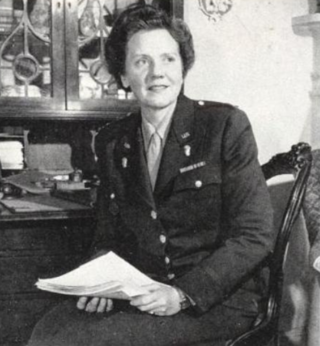
Frances Keegan Marquis was an American women's army captain, World War II veteran, and feminist activist. In 1943, she became the first commander of a women's expeditionary force, the 149th WAAC Post Headquarters Company, which served in General Eisenhower's North African headquarters. Before her military service, she held management posts in women's organizations; afterwards, she did volunteer work for women's groups, including serving as a United Nations observer for Altrusa International.

The Women's Auxiliary Army Corps was a female auxiliary of the New Zealand Military Forces. Raised during the Second World War under the command of Vida Jowett, most of its personnel served on the Home Front, with several manning coastal and anti-aircraft defences. Many WAACs were sent overseas to serve in Europe and the Middle East, mainly providing medical and welfare services to the troops of the 2nd New Zealand Expeditionary Force. At its peak, it had a strength of nearly 4,600 serving personnel. After the war, some WAACs served with Jayforce, providing welfare services for the New Zealand troops doing occupation duties in Japan.
The "Song of the Women's Army Corps" is a United States Army marching song written by Jane Douglass White, with lyrics by White and fellow soldier Camilla Mays Frank. Originally written during World War II as "The WAAC is in Back of You" by White before her induction into the service, the song's lyrics were adapted later by White and Frank to better reflect post-war women's army service, and was adopted by the Women's Army Corps as its official song in 1951.















